Horse rearing is a behavior every horse rider would like to avoid. Fortunately, there are solutions on how to prevent your horse from rearing and how to stop it. There are some signs that may warn you that the animal is going to rear. You should be aware of methods on how to handle such a misdemeanor.
If you notice the horse is rearing to express its discontent, it’s a clear sign to act. Beginner riders are not recommended to deal with the problem on their own. Instead, it’s better to call the professional and get a helping hand from that person. Anyway, such behavior shouldn’t be ignored.
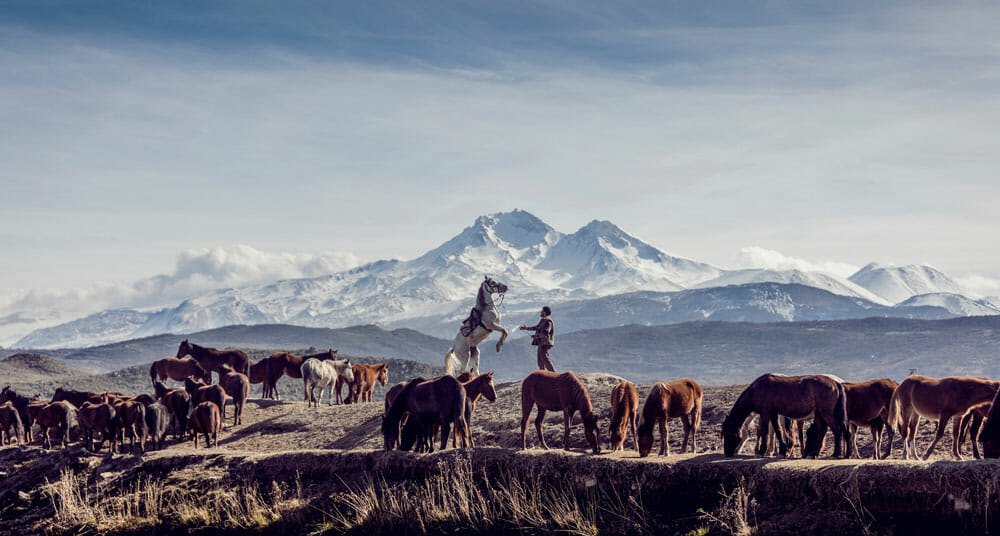
Why Do Horses Rear?
Before you start tackling the issue, you should know the reason for it. Such behavior can occur if the horse doesn’t want to do what you want. Or if the animal feels unconfident about it.
Proper training should be provided, there’s no need to yell or hurt the equine to solve the problem. It doesn’t work like that. A professional trainer and a bit of patience are the keys to a successful bond with a horse.
Mind that horses may rear in case of fear. This issue can be solved by working on eliminating this feeling. The professional trainer should find the root of the problem and deal with it. On the other side, a horse could show disrespect to a rider by rearing or buckling. The idea is to build trust and earn the respect of the equine.
The way you act when training a horse is important to develop its behavior. Every motion should be under control. Whether you’re schooling your horse or not. When you’re in the saddle or on the ground. If the equine is told to go forward, get the horse to move the right way, and control it aptly. Don’t let the animal walk away and leave it as it is. You should teach your companion to obey and use corresponding commands.
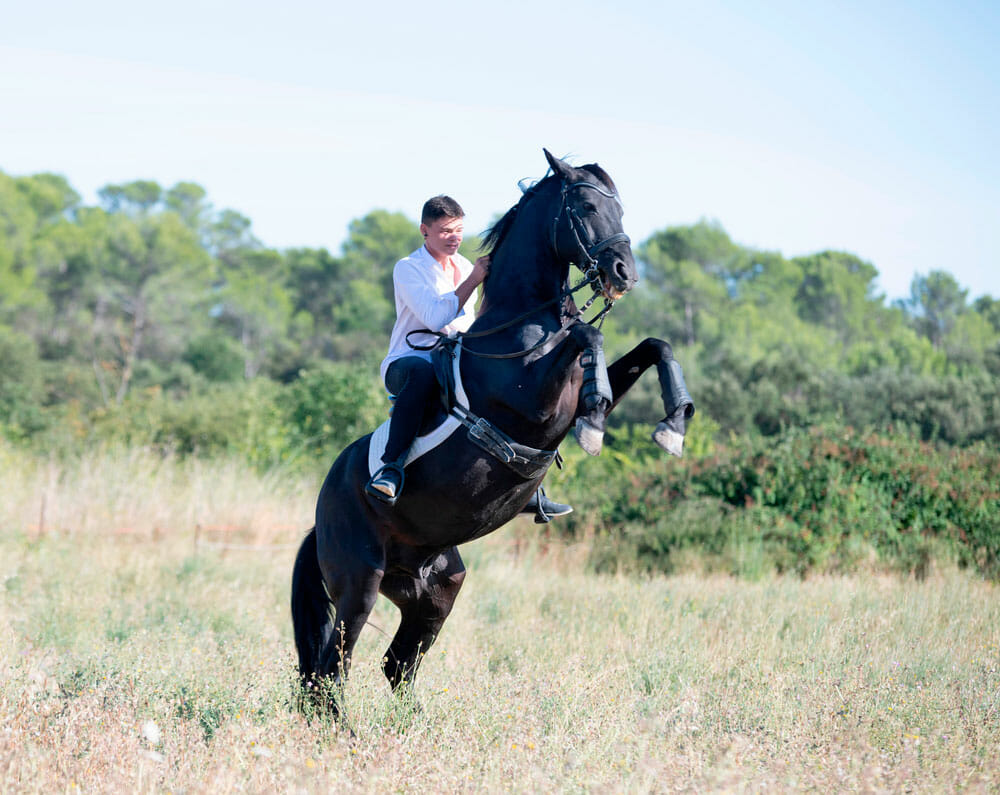
Main Reasons to Rear
Here’s a list of the common cases when a horse is rearing to make things clear.
Poor Tack
In case of the gear sits too tight, the horse may feel discomfort. Make sure the cinch, bridles, and reins are placed properly. Look for the right gear size for an excellent fit. Get the tack with durable and quality materials for safe and comfy riding.
Pain or Discomfort
If the tack gear is set duly, check the animal’s state of health. A horse that rears may get an injury or feel sick. Equines can start rearing, bucking, or bolting as a reaction to pain. That’s a common behavior to get rid of discomfort feelings. If you think the horse that rears has no issues with its tack, the reason could lie in the animal’s well-being.
Thus, it’s better to call the veterinarian immediately and get a horse check. Horses may rear because of problems with eyesight or teeth. You can not spot the symptoms so the vet will check the horse’s mouth and eyes as well.
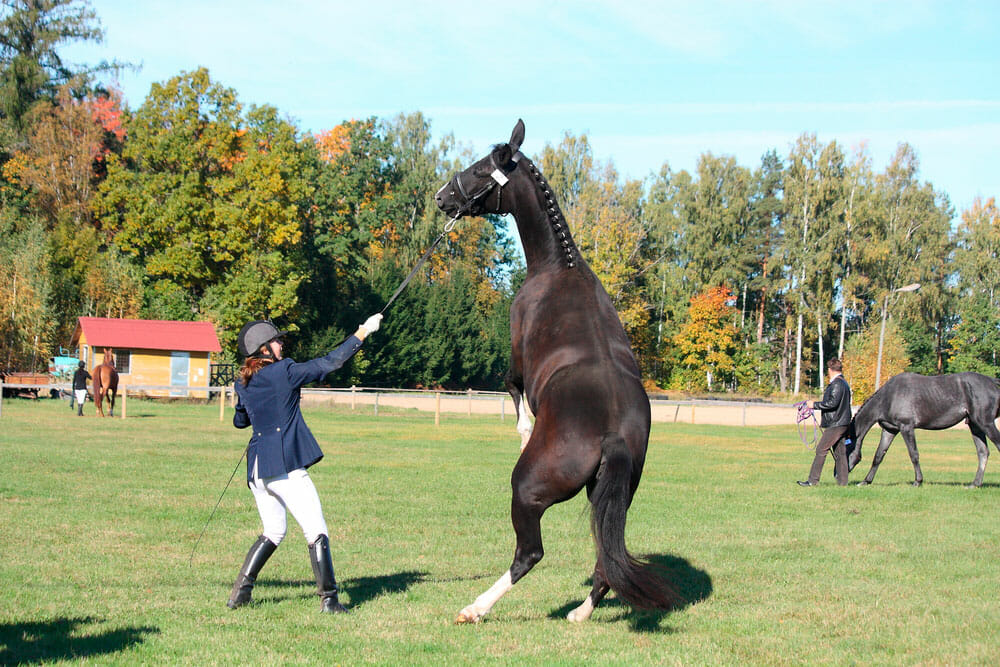
Low-Skill Training
If there’s no issue with the state of health, you may be considering the learning skills. The rider could miss that their commands led to frustration, confusion, or even fear in a horse. A steed rears to avoid doing what it doesn’t understand. That’s why it’s extremely important to leave horse training in the hands of a professional. They know how to bond with horses and avoid misunderstandings. A reputable expert will end up with brilliant horse riding results.
Boredom
A horse may rear just because it feels boring. And the opposite, when the animal is extremely excited. This feeling of excitement may be a cause of excessive energy that needs to be burnt off. That may happen if the equine eats too much and spends fewer calories a day. Horses may rear, bolt, or buckle. Thus, it’s crucial to think over the horse’s nutrition and adjust it to the season. The animal should get enough exercise to be able to burn its energy. Call your veterinarian to ask for advice regarding meal plans and training.
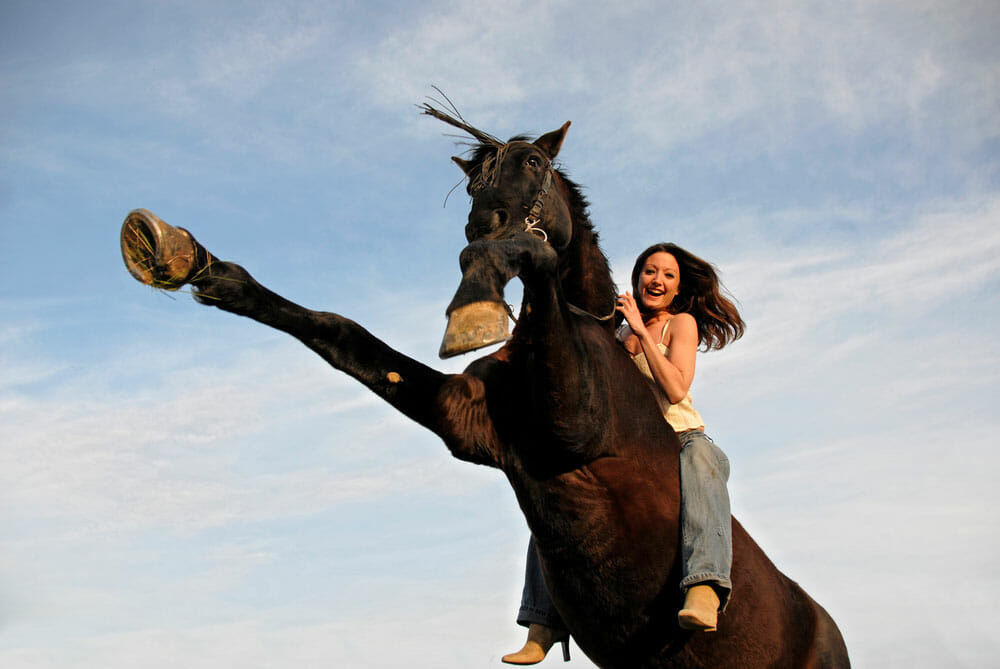
How to Cope with a Rearing Horse
There are some clear signs that may help you understand that a horse is about to rear. This can help you act respectfully and get ready to control the situation. If you know what to do, you get a bit of time to plan the way out. You need some practice to develop your reaction.
Get the Balance
If your horse rears when you’re in the saddle, shift your weight by moving forward. The point is that the rider should keep the balance and try to lean in the horse’s head when the animal stands on its hind legs. While the front feet are off the ground, you should stay in the saddle.
Another thing to remember, don’t pull the reins when the horse is rearing. As the gear is attached to the mouth, it may rapidly turn the horse’s head. And the animal will lose balance and fall down as well as the rider. This could result in severe injuries, frustration, and the fear of getting back on a horse.
That’s why you should always wear protective gear, especially a riding helmet. It may protect the brain and the skull from severe traumas. Such gear is usually thick-padded inside with a solid shell on the outer side.
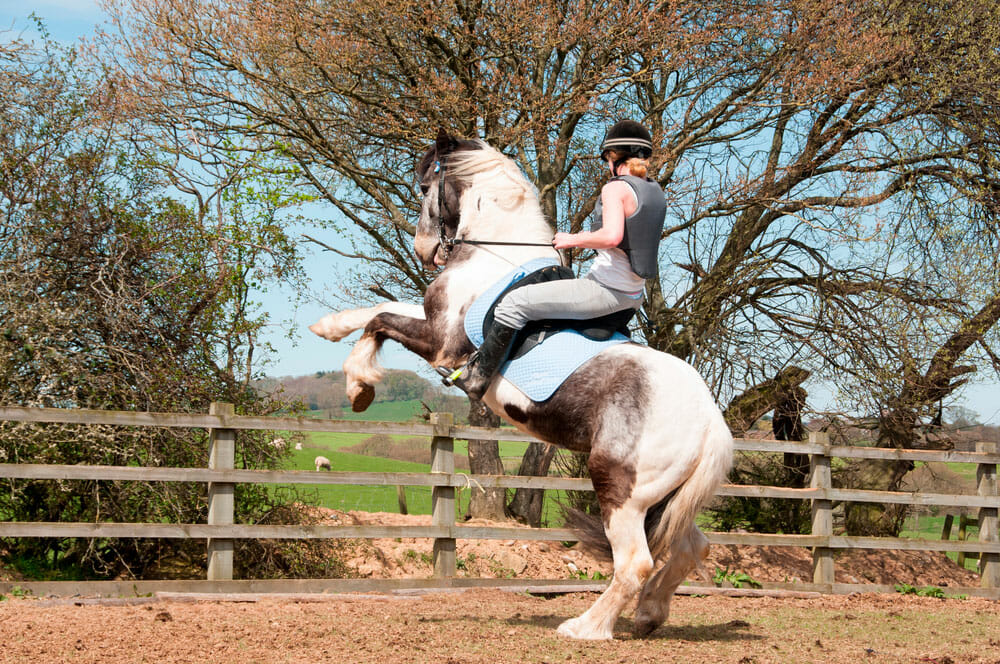
Emergency Dismount
On the other side, riders can use emergency dismount. If you feel the animal is out of control, it may be better to get off on your feet. Some claim emergency dismount may cause even more problems. So it’s up to you whether to get to the ground and the situation you face. There are times when this solution is the best.
The bailout is one of the methods to get out of the horse when it’s rearing. The question is how to do it properly. No matter what your riding style is, these guidelines may come in handy.
- Remove both feet out of the stirrups.
- Put the reins on the horse’s neck so they won’t bother you on your way.
- Put your hands on the withers and shift the weight by moving forward.
- With your legs free from the stirrups, swing them forward and backward slightly. So you can get out of the cantle to dismount on the ground.
- Vault off the horse using the withers as the support point. Get one of the legs over the equine in the way you usually dismount. But in this case, the rider needs more effort to vault off.
- Get to the ground on your feet and bend your knees. This could help to shock absorb to avoid pain. In case you lose balance when vaulting, roll away from the horse immediately.
Emergency dismount needs consistent training on horses. Riders usually practice the bailout to improve their motion. Keep in mind that horse rears may not be the same every time. So you have to learn how to react in different ways. You should stay calm and think clearly.
Once you bailout, it doesn’t mean you should do it every time you feel unconfident in the saddle. Keep on building trust and respect to minimize such horse rearing behavior.
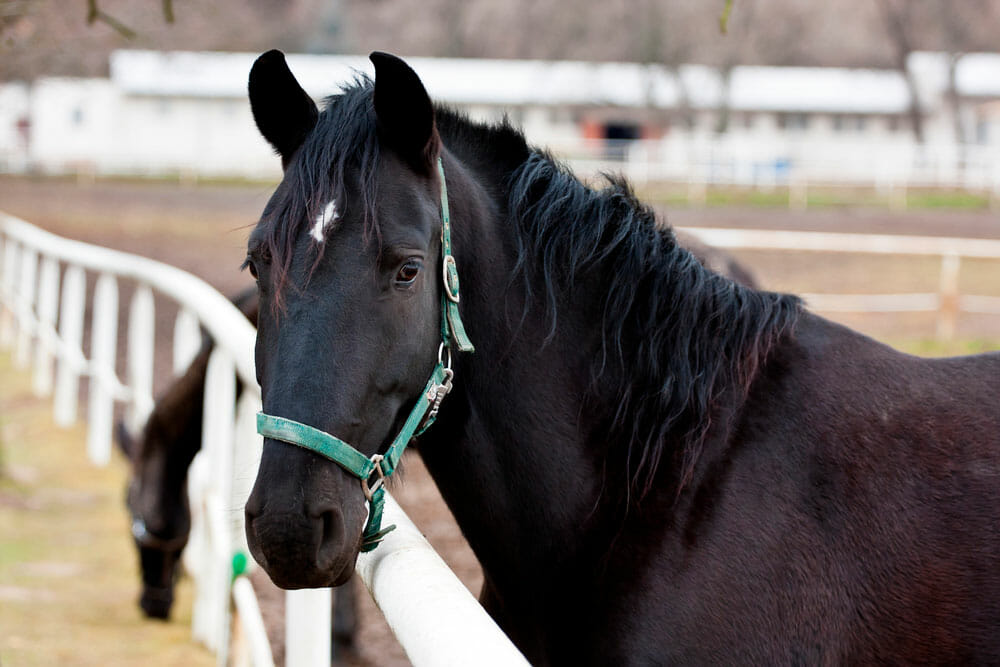
How to Prevent Rearing
Horse rears can be prevented if riders know how to tackle their horses, including how to:
- provide proper schooling with a professional trainer.
- involve the horse’s hindquarters. If the rider knows how to control the hindquarters, they may prevent their stallions from rearing.
- watch your hand position. Make sure you handle the reins duly and cause no pain to the animal.
- determine the common signs and triggers when the equine is about to get its front feet off the ground.
- stay calm and keep the balance while the horse is rearing.
- tack the gear like a girth and a snaffle bit so the horse feels comfy.
- lead a horse with no pressure.
If you take all these things into consideration, you may end up with strong relations with a horse and avoid rearing.

Horse That Rears Explained
Rearing may occur if the horse feels that something goes wrong. Fear, discontent, or pain could be reasons for rearing. That’s why a human should know how to handle such a powerful creature. Every person who deals with a horse has to learn how to act in case of rearing.
There are a few crucial aspects that can help you avoid any cause of rearing. Some of them are mentioned in the article. These are easy ways to spot the signs of the horse’s misdemeanor.
Horses, like dogs, need constant exercising to develop their skills. Once you hone your skills, you can’t get enough of horse riding and crave something new.
